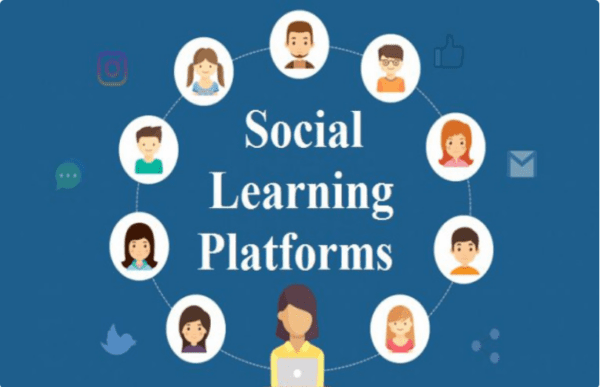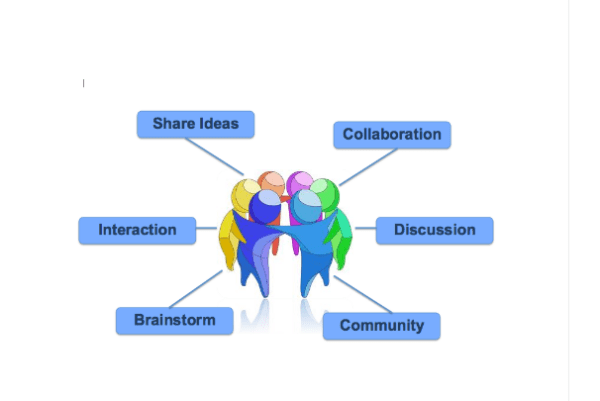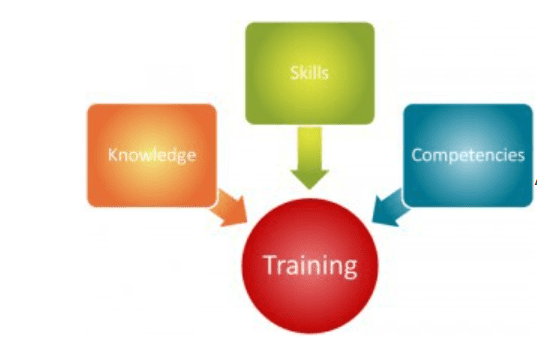Are you looking for a more interactive and engaging way to learn online? Look no further than social learning platforms. These platforms allow learners to collaborate and share knowledge, creating a more community-driven approach to learning.
With the rise of eLearning and online learning, social learning platforms have become increasingly popular. They offer a variety of features, such as discussion forums, video conferencing, and gamification, that make learning more fun and engaging. Learning from and with others can enhance the learning experience and help learners retain information better.
If you’re looking for a more collaborative and interactive way to learn online, social learning platforms may be just what you need. Keep reading to learn more about the benefits of these platforms and how they can help you achieve your learning goals.

Understanding Social Learning Platforms
Defining Social Learning
Social learning is acquiring knowledge and skills through interaction and collaboration with others. It is a natural way of learning that has happened since the beginning of human existence. Social learning platforms are online tools that facilitate social learning and enable learners to interact with each other, share knowledge, and collaborate on projects.
Features of Social Learning Platforms
Social learning platforms have various features that make them practical tools for collaborative learning. Some of these features include:
- Discussion forums are online spaces where learners can ask questions, share ideas, and discuss with their peers.
- Instant messaging: This feature allows learners to communicate with each other in real time, making it easier to collaborate on projects and share ideas.
- Gamification: Gamification is the use of game design elements in non-game contexts. Social learning platforms use gamification to make learning more engaging and fun.
- Personalized learning: Social learning platforms use AI algorithms to personalize learning content based on the learner’s interests, preferences, and learning style.
Benefits of Collaborative Learning
Collaborative learning has several benefits, some of which include:
- Improved engagement: Collaborative learning is more engaging than traditional learning methods because learners are actively involved in the learning process.
- Increased knowledge sharing: Collaborative learning platforms provide a platform for learners to share knowledge and ideas, which can lead to a deeper understanding of the subject matter.
- Improved problem-solving skills: Collaborative learning requires learners to work together to solve problems, which can enhance their problem-solving skills.
- Enhanced social skills: Collaborative learning allows learners to interact with others, which can improve their social skills and build their professional network.
Social learning platforms are practical tools for collaborative learning. They provide a platform for learners to interact with each other, share knowledge, and collaborate on projects. The features of social learning platforms make them engaging and practical tools for learning. Collaborative learning has several benefits, including improved engagement, increased knowledge sharing, problem-solving, and enhanced social skills.

Core Functionalities
Social learning platforms offer a variety of core functionalities that make them an effective tool for employee training and development. This section will discuss the three most essential functionalities that every social learning platform should have.
Learning Management System Integration
One of the critical functionalities of a social learning platform is its ability to integrate with a Learning Management System (LMS). This integration allows you to manage your training programs and track your employees’ progress in one place. With an LMS integration, you can create and assign courses, monitor completion rates, and generate reports on your employees’ learning progress.
Gamification and Engagement Tools
Gamification and engagement tools are essential for creating an interactive and engaging learning experience. Social learning platforms offer a variety of tools, such as leaderboards, badges, and points, that can be used to incentivize learning and encourage participation. These tools can also be used to create friendly competition among employees, which can help to increase engagement and motivation.
Assessment and Quizzes
Assessments and quizzes are essential tools for evaluating your employees’ learning progress. Social learning platforms offer a variety of assessment and quiz tools, such as multiple-choice questions, fill-in-the-blank questions, and matching questions. These tools can test your employees’ knowledge and understanding of the material and identify areas where they may need additional training.
A social learning platform’s core functionalities should include learning management system integration, gamification and engagement tools, and assessments and quizzes. These functionalities can help create an interactive and engaging learning experience while providing the tools you need to track your employees’ progress and evaluate their learning outcomes.
Implementation and Best Practices
When implementing a social learning platform, it’s crucial to establish clear guidelines and best practices. This will ensure that your training programs are effective and your learners are engaged. Here are some tips to help you get started:
Setting Up Training Programs

Before you launch your social learning platform, you must have a clear plan for your training programs. This includes identifying the learning objectives, creating relevant content, and setting up assessments to measure learning outcomes. You should also consider the format of your training programs, such as webinars, videos, or interactive modules.
To ensure that your training programs are effective, aligning them with your organization’s goals and objectives is essential. This will help you measure your training programs’ impact and adjust as needed.
Encouraging Active Participation
One of the key benefits of social learning platforms is the ability to encourage active participation from learners. To do this, you should create opportunities for learners to collaborate and share their knowledge and experiences. This can be done through discussion forums, group projects, or peer-to-peer learning.
To encourage active participation, you should also ensure your learners have access to the resources they need to succeed. This can include providing access to relevant content, tools, and support services.
Monitoring and Reporting
Monitoring learner engagement and tracking learning outcomes is crucial to ensure that your social learning platform is effective. This can be done through reporting and analytics tools, providing insights into learner progress, participation rates, and learning outcomes.
By monitoring and reporting on your social learning platform, you can identify areas for improvement and make adjustments as needed. This can help to ensure that your training programs are effective and that your learners are engaged.
In summary, implementing a social learning platform requires careful planning and execution. By setting up effective training programs, encouraging active participation, and monitoring and reporting on learner engagement, you can ensure that your social learning platform is effective and meets your organization’s needs.
Advanced Features and Customization
Regarding social learning platforms, having advanced features and customization options can make a significant difference in the quality of the learning experience. Here are some of the key features to look for when considering a platform:
API and Integration Capabilities

API and integration capabilities allow you to connect your social learning platform with other tools and systems you use in your organization. For example, you might want to integrate your platform with your HR system to enrol new employees in training courses automatically. Look for a platform that has a robust API and supports integrations with popular tools like Slack, Salesforce, and Microsoft Office.
Customizable Learning Paths
One of the most significant benefits of social learning is the ability to create personalized learning paths for each user. Look for a platform that allows you to customize the learning experience based on each user’s role, skill level, and learning goals. This can include everything from personalized recommendations to customized content and assessments.
Scalability and Compliance
As your organization grows, you need a platform to scale with you. Look for a platform that can handle many users and courses without sacrificing performance. Additionally, compliance is a critical consideration when it comes to social learning. Look for a platform with robust security features and compliance with industry standards like GDPR and HIPAA.
Overall, advanced features and customization options can make a significant difference in the effectiveness of your social learning platform. By choosing a platform that supports API and integration capabilities, customizable learning paths, and scalability and compliance, you can create a learning experience tailored to your organization’s needs.
Choosing the Right Platform
When choosing a social learning platform, there are several factors to consider. This section will explore critical considerations to help you choose the right platform for your organization.
Evaluating Platform Features
The first step in choosing the right social learning platform is to evaluate each platform’s features. Look for a platform that provides a range of features to meet your organization’s needs. Some of the key features to look for include:
- Collaborative Learning Features: Look for a platform allowing learners to collaborate, share knowledge, and work on projects.
- Gamification: Gamification is a powerful tool for engaging learners and making learning fun. Look for a platform with gamification features such as leaderboards, badges, and point systems.
- Content Creation and Management: Look for a platform that allows you to create and manage your content and import content from other sources.
- Mobile Learning: Look for a mobile-friendly platform that allows learners to access content on their mobile devices.

Pricing and Support Considerations
Another critical factor to consider when choosing a social learning platform is pricing and support. Look for a platform that offers transparent pricing and a range of pricing plans to suit your budget. It would be best to look for a platform that provides excellent customer support, including online documentation, user forums, and dedicated support staff.
Success Stories and Use Cases
Finally, when choosing a social learning platform, it’s essential to look at success stories and use cases from other organizations. Look for case studies and testimonials from organizations that have successfully implemented the platform you are considering. This will give you a better idea of how the platform works in practice and what kind of results you can expect to achieve.
In conclusion, choosing the right social learning platform requires careful consideration of various factors, including platform features, pricing and support, success stories, and use cases. By evaluating these factors, you can choose a platform that meets your organization’s needs and delivers accurate results.
